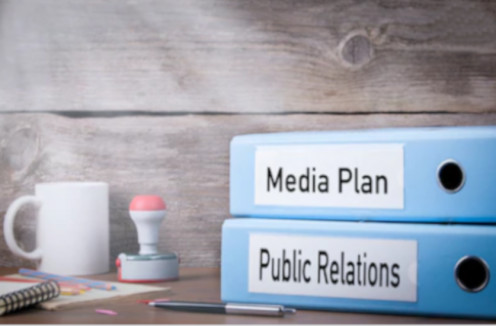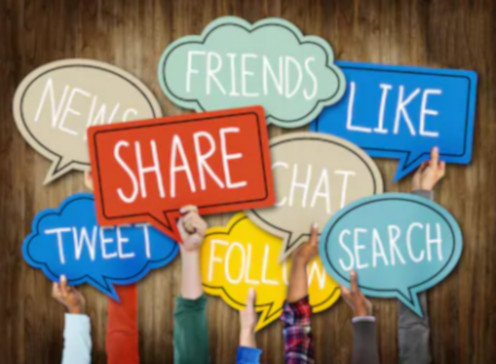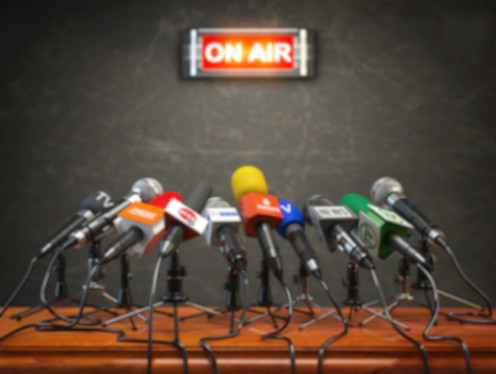Media Relations vs. Public Relations

Media relations and public relations are not the same thing
Although people use the terms media relations and public relations interchangeably, the two practices—while they have some basic similarities, are not the same thing. For this reason, these concepts should not be used as synonyms.
Public relations professionals need to practice good media relations, and media relations professionals must understand and conduct activities similar to those engaged in by public relations practitioners. Still, "public relations" and "media relations" actually refer to two distinct areas of professional practice that, necessarily, employ overlapping knowledge, skills and tools.
While both areas of endeavor require great understanding of best practices in communicating for business purposes, public relations and media relations are different, at least conceptually.

What is Media Relations?
Media relations is a professional practice in business where the primary goal is to build or to strengthen relationships with the media, specifically. While public relation’s primary goal is to communicate with the public by working through contacts in the media, “media relations” is primarily concerned with a business or organization's relationship with professional journalists and/or media outlets.
The practice of media relations should be focused on keeping strong working relationships with members of the media—including those professionals who write, report, produce, and edits news and features for print and broadcast media. Media relations practitioners work to provide oversight of high-level communication between companies/organizations, and media resources. They connect with media on a daily basis for the purpose of promoting a company, and may meet with editors, publishers, and reporters at any time, not only when sharing news or other company information.
Corporate media policy is developed by the top company executives, in consultation with communications experts--including those handling media relations. Working together, these corporate communications professionals develop and design media relations plans that become a blueprint for what the company needs to do to strengthen relationships with local, regional, national, and/or international media outlets. Inherent in the media relations plan should be strategies designed to manage positive perceptions of the company that will enhance the company’s image as it strives to reach business goals. The media relations plan can be part of a broader public relations plan, with the media being designated as one of the company's "publics."
A media relations practitioner can be an independent contractor, an employee working directly for a business or company, or a professional working for a consulting firm providing expert help to companies needing the help of highly skilled and experienced media savvy professionals.

What Does The Media Want/Need?
Professionals working for communications media want their jobs to be made as easy as possible. They want to communicate with other knowledgeable, expert communicators who can help them as they seek to gather:
- Information that fits in with their editorial coverage.
- Well-written, concise information that contains news value and/or human interest.
- Photos or video to enhance and/or help them tell stories.
- In addition to news, stories or information/content with entertainment value.
Companies that understand the value of media relations (and where there is a clear distinction between media relations and public relations) will usually develop a media relations plan that is part of an overall communications plan for the organization.
A strong presence on the World Wide Web can do a lot to enhance an organization’s ability to develop even stronger media relations than what is possible using traditional media alone. Although the Internet has not replaced traditional media, it has extended its reach. Information seekers, including media reporters and editors, often use the Internet, first, to search for the latest news, information, links, and resources to help them do their jobs. When companies make good, effective use of tools available through the Internet, it is much easier for media outlets to discover useful news and content.

How Is Media Relations Different From Public Relations?
Public relations is a function of good business management that seeks to establish mutually beneficial relationships between a company/organization and its many different publics. As stated earlier in this article, members of the media can be viewed as being among the "publics" of public relations.
Strong relationships with the media are immensely beneficial to business. Therefore, it is valuable and worthwhile for companies to develop plans and strategies for communicating directly with member of the media, just as they develop plans and strategies for communicating with other important and beneficial "publics."
Media relations professionals utilize communications tactics to build strong, effective working relationship with members of the media. They establish rapport with media professionals in order to learn the jobs, their needs/desires, and the priorities of those who work for media outlets. By using a company's media relations policies and practices as part of an ongoing communications program, media relations professionals can help provide for any company/organization:
- Improved ability to manage and enhance corporate reputation.
- Expert handling/management of a "crisis" situation/event.
- Pinpoint precision/media placement of stories announcing, introducing, or re-introducing products/services.
- Skillful use of media in ways that can extend the reach of paid media, expanding opportunities in times when budgets are constrained/limited.
Again, as I stated earlier in this article, the primary goal of media relations is to build and/or strengthen relationships with the media, specifically. On the other hand, the primary goal of public relations is to utilize the media to help build and/or strengthen relationships with members of a variety of different "publics."
Media relations professionals are responsible for knowing more about how the media works. As part of the communications team, it is their job to develop intimate knowledge of how media professionals work so that they can provide insight and information to help other communications professionals interact/utilize media, in order to do their jobs more effectively. By working continuously to build and maintain strong working relationships with media professionals, media relations professionals can provide expert advice and guidance. For example, they should know such things as the best time to pitch a particular story to a particular person at a specific media outlet. They should know the best editors or outlets to be targeted for possibly publishing a particular story, or even the right time to schedule a press conference.
Media relations and public relations professionals work together and often use overlapping skills and tools. For example, a media relations specialist might write and distribute press releases, just as does a public relations professional. A media relations professional may work with public relations personnel to help generate positive perceptions of a company or organization, and/or to help counter the effects of any negative or potentially damaging publicity. In many companies and organizations, the media relations and public relations functions may even be handled by the same individual(s).

The Internet's Place in Media Relations
The Internet has extended the practice of media relations into the world of social media. Building relationships through social media networks provides companies with additional means of developing universal/global “direct links” to customers and other stakeholders without going through traditional media channels. While the "mass media" is able to reach, at once, large populations/broad audiences, social media is able to reach and communicate with individuals and narrow audiences synchronously (in real time) or asynchronously.
Today, a good understanding about how to use social networking tools for business purposes (including sites such as Facebook, Twitter, YouTube, LinkedIn, Instagram, and many others, as well as bloggers and podcasters) is vital in the world of business. Effective use of these tools can extend a company’s ability to keep the public informed about their mission, accomplishments, and practices in a positive way that is easily accessible, credible, and consistent.
The Internet simply offers companies another avenue of communicating with large groups people that, in the past, was only possible through traditional media. Companies are afforded low and no-cost ways to create a positive image and build positive perceptions in the minds of customers and potential customers. Organizations are able to build and use, efficiently and effectively, websites as a primary tool for connecting with consumers and potential customers. A good business website can enable even businesses with limited funds for marketing to establish crucial links with those who might be buyers or potential buyers, as well as with potential suppliers.
While social networks have not replaced traditional media as primary conveyors of information to the masses, they should not be ignored. These outlets have added valuable links to media, customers, and the general public that did not exist in the days before the Internet.
Guidelines for Writing an Effective Press Release. This article is meant to help beginners learn the basics of writing effective press releases.
© 2012 Sallie B Middlebrook PhD








